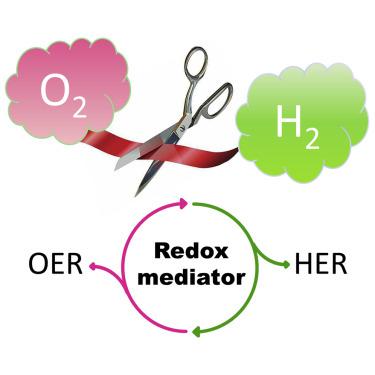Cell Reports Physical Science ( IF 8.9 ) Pub Date : 2020-07-29 , DOI: 10.1016/j.xcrp.2020.100138 Jianhang Huang , Yonggang Wang

|
Water electrolysis powered by renewables provides a green approach to hydrogen production to support the “hydrogen economy.” However, the hydrogen evolution reaction (HER) and the oxygen evolution reaction (OER) are tightly coupled in both time and space in traditional water electrolysis, which brings inherent operational challenges, such as the mixture of H2/O2 and the limited HER rate caused by the sluggish kinetics of OER. Against this background, decoupling H2 and O2 production in water electrolysis by using the auxiliary redox mediator was first proposed in 2013, in which O2 and H2 are produced at different times, rates, and/or locations. The decoupling strategy offers not only a new way to facilitate renewables to H2, but it can also be applied in other chemical or electrochemical processes. This review describes recent efforts to develop high-performance redox mediators, optimized strategies in decoupled water electrolysis, the design of electrolyzer configuration, the challenges faced, and the prospective directions.
中文翻译:

通过解耦电化学水分解有效地进行可再生的氢转化
由可再生能源提供动力的水电解提供了绿色的制氢方法,以支持“氢经济”。然而,在传统的水电解中,析氢反应(HER)和析氧反应(OER)在时间和空间上紧密耦合,这带来了固有的操作挑战,例如H 2 / O 2和有限的HER的混合速率因OER的动力学缓慢而引起。在此背景下,2013年首次提出了使用辅助氧化还原介体将水电解中的H 2和O 2脱钩的方法,其中O 2和H 2在不同的时间,速率和/或位置生产。该去耦策略不仅提供了一种将可再生能源转化为H 2的新方法,而且还可以应用于其他化学或电化学过程。这篇综述描述了近期开发高性能氧化还原介体的努力,去耦水电解的优化策略,电解槽配置的设计,面临的挑战以及未来的方向。


























 京公网安备 11010802027423号
京公网安备 11010802027423号